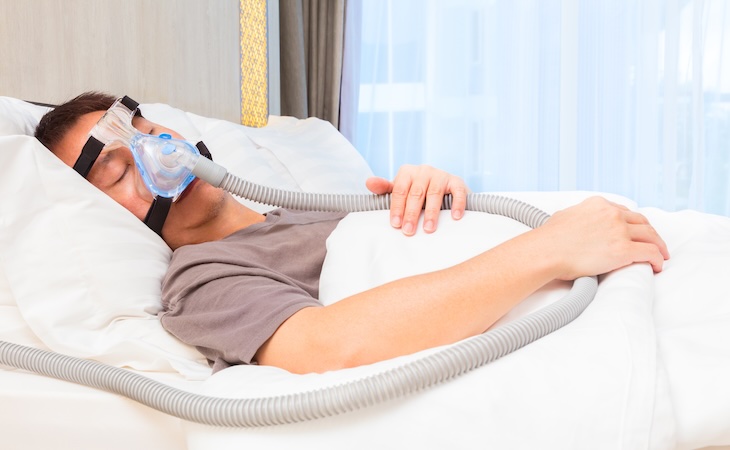Excessive daytime sleepiness (EDS), also known as hypersomnia, affects between 10% to 20% of Americans—and the number is increasing across age groups, genders, and in people with diabetes or joint pain. Americans in the 2020 Sleep in America Poll reported feeling sleepy on average three days a week and experiencing impacts on their mood and physical health as a result.
This article will explain what EDS is, what causes it, and how to treat it.
What is excessive daytime sleepiness?
Excessive daytime sleepiness is defined as difficulty staying awake or alert, or an increased desire to sleep, during the day. It’s considered EDS when it happens almost every day for at least three months. EDS can manifest in different ways, including:
- Trouble waking in the morning
- Feeling sleepy during your waking hours
- Not feeling refreshed after a nap
In short, daytime sleepiness is considered excessive—and problematic—when it’s so difficult to stay awake during the day that it interferes with your normal activities.
What are the symptoms of excessive sleepiness?
EDS can include symptoms you may not connect with a lack of sleep, such as:
- Loss of appetite
- Trouble focusing
- Trouble staying alert
- Difficulty with thinking or memory
- Difficulty retaining new concepts
- Feeling anxious or irritable
- Slower reaction times
What causes excessive daytime sleepiness?
There are many possible causes of EDS, but one of the most common culprits is a chronic lack of sleep. This can be due to working long hours, an irregular schedule, insomnia, or other reasons.
Fragmented or poor quality sleep, multiple awakenings at night to use the bathroom, smoking, not exercising enough, and other lifestyle habits can interfere with sleep quality and cause EDS.
Here are some of the most common causes of EDS:
Insufficient sleep
A frequent cause of EDS is sleep loss. Despite recommendations that adults sleep seven to nine hours a night, many people fall short of that goal. Upwards of one in three Americans report they regularly don’t get enough sleep. This “sleep debt” accumulates and can lead to excessive sleepiness.
Sleep apnea
Obstructive sleep apnea is commonly linked to a lack of restorative sleep at night, which can lead to EDS. Sleep apnea occurs when the upper airway collapses for at least 10 seconds during sleep, causing the sleeper to stop breathing and then snore or gasp for breath—up to hundreds of times each night. Interrupted breathing means interrupted sleep, leading to excessive daytime sleepiness.
Restless legs syndrome
Restless legs syndrome (RLS) is a disorder characterized by unpleasant sensations in the legs and a strong urge to move them. This can cause jerky leg movements every 20 to 30 seconds all night. Because RLS symptoms are worse at night, they can significantly interrupt your sleep—and make you sleepy when you need to be awake.
Sleep-wake disorders
Other sleep-wake disorders more directly affect the neurological processes that regulate the sleep cycle. Conditions such as narcolepsy and idiopathic hypersomnia are believed to influence the hormones that promote wakefulness, causing daytime sleepiness. Another example is circadian rhythm sleep disorders, caused by problems with your body’s internal “clock.” These may cause you to fall asleep too late, wake too early, or have a hard time adjusting to a sleep schedule.
Narcolepsy
Narcolepsy is a sleep disorder related to the dreaming period of sleep called REM (rapid eye movement) sleep. Narcolepsy doesn’t only affect nighttime sleep but can cause REM periods throughout the day. Besides drowsiness, it can cause “sleep attacks,” brief uncontrollable moments of falling asleep, without warning. During sleep, narcolepsy may cause insomnia, vivid and possibly frightening dreams or hallucinations, and even the temporary paralysis that’s part of REM sleep.
Depression
Persistent feelings of sadness, anxiety, and hopelessness are symptoms of depression. It can also include problems with forgetfulness, concentration, or a loss of energy and physical symptoms such as back pain or stomach upset. Depression is strongly linked to sleep problems and sleepiness, though it’s not always easy to distinguish whether depression is a cause or symptom of sleep problems.
Other health conditions
Besides depression, other medical and mental health conditions—including anxiety, schizophrenia, lupus, Parkinson’s disease, multiple sclerosis, cancer, and chronic pain—can also disrupt sleep and lead to EDS.
Medications
Some prescription medications, over-the-counter medicines, and recreational drugs may cause EDS. These include opioid pain medications; antihistamines, often used to treat allergies; antiseizure drugs; drugs for heart disease and high blood pressure; marijuana; and alcohol. Talk to your doctor first if you’re concerned that a prescribed medication may be causing you to have excessive daytime sleepiness.
What are the health consequences of excessive sleepiness?
EDS not only undermines your own health, but it can endanger others because of its connection to road accidents caused by drivers too tired to drive with a clear head—or who may even fall asleep at the wheel.
How is excessive daytime sleepiness diagnosed?
“It’s important to know EDS isn’t a classified sleep disorder, says Lola Feiger, with Rise Science, makers of the sleep and energy app RISE. “It’s a symptom of severe sleep deprivation.”
If you’ve experienced one or more of the following symptoms almost every day for at least three months, then there’s a high chance you might have EDS, explains Feiger.
These symptoms include the inability to stay alert or awake; more intense sleep inertia (morning grogginess); impaired memory; difficulty in concentrating; overall lack of energy and sluggishness; increased irritation/stress/anxiety/depression; and sleep attacks (in medical conditions like narcolepsy), says Feiger.
If you experience these symptoms regularly, it’s time to see a medical professional to find out what’s going on—and have it treated.
“Excessive daytime sleepiness is diagnosed through undergoing different types of sleep and clinical examinations performed by a doctor,” says Vanessa Osorio, a certified sleep science coach at Sleepopolis. “These tests will look for underlying sleep disorders or health conditions that may be disrupting your sleep.”
How is excessive sleepiness treated?
“Since excessive daytime sleepiness is often caused by sleep disorders or other medical conditions, the treatment will vary,” says Osorio. “For example, if excessive daytime sleepiness is secondary to sleep apnea, proper treatment of the sleep apnea will lessen the symptoms of daytime sleepiness.”
Osorio points out that there are medications that can help lessen the symptoms of excessive daytime sleepiness. “So it’s important to get evaluated by a sleep doctor to find the right treatment for you,” she says.
Katherine Hall, a sleep psychologist at Somnus Therapy, adds that treatment varies depending on the cause of your excessive daytime sleepiness.
“If it’s due to a sleep disorder, then treating the sleep disorder would be the first step,” she says. “This might involve behavioral changes, psychological treatment, or medication.”
FAQs
What conditions can cause excessive daytime sleepiness?
Medical and mental health conditions can cause EDS by interfering with your ability to get a good night’s sleep. These include sleep apnea, sleep-wake disorders, restless legs syndrome, narcolepsy, depression or anxiety, and other health conditions.
What deficiency causes daytime sleepiness?
A deficiency in sleep—inadequate rest—is the most common cause of daytime sleepiness. The key to eliminating EDS is to figure out what’s causing you not to get enough sleep and take steps to treat or change whatever it is.
What causes excessive sleepiness in older people?
There are often multiple reasons older adults may experience excessive sleepiness. It may be the sign of an underlying sleep disorder, the result of a chronic medical condition, an undiagnosed mood disorder, or the side effects of prescription medication. EDS in older people is cause for concern as it’s associated with a higher risk for cognitive decline and dementia.
Why do I feel so sleepy in the daytime?
The obvious reason why you feel sleepy in the daytime is that you aren’t getting adequate sleep at night. Figuring out why that is the case is the challenge—and the beginning of treating the problem so you can get proper rest and enjoy normal alertness and energy during the day.
How do you stop excessive daytime sleepiness?
You stop EDS by first figuring out what is causing it. There are certain lifestyle adjustments you can make even before consulting with a medical professional.
“Practicing good sleep hygiene, establishing a bedtime routine, cutting back on caffeine and alcohol, and decreasing stress are initial steps that can help if you are experiencing disrupted sleep leading to excessive daytime sleepiness,” says Victoria Wildhorn, a sleep expert at Mattress Clarity.
For help putting together a stress-relieving bedtime routine, check out our list of the most relaxing nighttime activities to incorporate into your evenings.




